Stem Cell Transplantation in Myeloproliferative Neoplasms
- Dr. Richard Silver, Professor of Medicine and Director of the Leukemia and Myleoproliferative Center at New York Presbyterian-Weill Cornell Medical Center
- Dr. Ruben Mesa, Chair, Hematology, Mayo Clinic, Scottsdale, Arizona
- Tsiporah Shore, M.D., Associate Director, Bone Marrow and Hematopoietic Stem Cell Transplant Program, Professor of Clinical Medicine, Weill-Cornell Medical College
- Dr. Nicolaus Kroeger, Professor and Medical Director of the Department of Stem Cell Transplantation, University Hospital Hamburg-Eppendorf, Germany
- Dr. Donal McLornan, Consultant Haematologist, King’s College Hospital and Guy’s and St. Thomas’ Hospital NHS Foundation
- Veena Fauble, M.D., Hematologist/Oncologist, Stem Cell Transplant for Myelofibrosis Specialist, Mayo Clinic
- Professor Claire Harrison, MD, Guy’s and St. Thomas’ NHS, consultant. Deputy clinical director, cancer and haematology
- Dr. Srdan Verstovsek is a medical oncologist and Professor in the Department of Leukemia at the University of Texas MD Anderson Cancer Center
Distinguished Panelists
The prospect of a stem cell transplant (SCT) is never far from an MPN patient’s mind. At first diagnosis the idea arises as a possibility to nip this disease in the bud, get a fresh start at producing healthy blood lines.
At the other extreme, SCT can appear to be our only option to stop progression once surging counts are brought under control.
There are associated challenges, finding a compatible donor, arranging insurance coverage , preparing for the rigorous Induction procedure, housing, family support, etc. But the one overwhelming question is deciding whether or not to elect the procedure.
Should we elect a stem cell transplant in hope of a cure? We hear many opinions, and recommendations, read case studies. Finally, however, it is up to each of us, alone, to make this life-altering decision.
As Dr. Ruben Mesa said in his earlier MPNforum introduction to this discussion, “Anyone who tells you that the issue of whether or not to have a bone marrow transplant is a simple decision is an individual not facing that decision.”
We have had lengthy patient community discussions on SCT risks and benefits, one on-line discussion taking place over the course of days, edited and published in full. With the participation of patients who have gone through the process as well as those just entering the first stages, those discussions helped frame the realities of this extraordinary procedure for all MPN patients.
Now, bringing the MPNclinic into the discussion adds the weight of deep professional and practical experience. The Clinic doctors and their colleagues address the issues of SCT timing, conditioning, isolation, means to measure outcomes. co-morbidities, age, emotional and psychological.
This Roundtable consists of introductory answers to common patient questions by Dr. David Steensma and Dr. Claire Harrison followed by panel discussion of these and related issues. The Roundtable concludes with the patient’s perspective provide by Chris Harper, a short reflection on the underlying biology, and a video featuring Dr. Ruben Mesa and Dr. Veena Fauble.
Dr. David Steensma and Dr. Claire Harrison offer an introductory perspective, answering the most pressing patient questions. Chris Harper, a myelofibrosis patient who has successfully undergone stem cell transplantation and counseled many fellow patients, closes the discussion with his firsthand perspective. Many thanks to veteran patients and caregivers Marina Sampanes Peed, Ann Haehn and Kathy Dubin Flynn for help in organizing this event and all participating patients, caregivers and healthcare providers.
The first step — Your doctor.
The road to stem cell transplantation starts in the hematologist’s office with a patient’s personal physician. As a gatekeeper to the long and difficult events that will transform a patient’s myeloproliferative neoplasm, the physicians is required to answer critical, often unasked, questions. To guide us through this first step we turned to the MPNclinic’s newest member, the much acclaimed and deeply experienced Dr. David Steensma, Dana Farber Cancer Institute, specializing in research and patient care in the leukemias, myelodysplasic syndrome and myeloproliferative neoplasm. He is joined by Professor Claire Harrison.
Patient Questions
Will you continue to follow me post-transplantation?
Steensma: This varies by institution. At some institutions the physician caring for the patient for myelofibrosis is the same as the physician who will take the patient through transplant. At other centers (including mine), the transplant team is separate so there is a transfer of care as transplant approaches. If problems arise post-transplant that are related to the MPN rather than a transplant complication like GVH, failed engraftment, or infection, then the MPN physician usually becomes involved again.
Harrison: Usually the doctor who follows a patient after transplant is the transplant doctor since at this point the patient will not have the original disease, e.g., myelofibrosis. Sometimes, however, they are one and the same person.
How can I improve my chances of a successful SCT?
Steensma: Following the recommendations of the treating team can be helpful (these protocols about diet, permitted and prohibited activities, and logistics such as follow-up schedule differ from center to center), but to a large extent success or failure of SCT is outside of the control of the patient. This loss of control and uncertainty can be quite difficult.
Harrison: Keep as fit as possible and have a positive mental attitude.
On what factors would my estimated survival outcome be based?
Steensma: There are two types of factors that are the major drivers determining patient outcome with SCT: 1) patient factors such as age and the presence or absence of other medical problems (“comorbid conditions”), and 2) disease factors. Patients who are younger, lack other medical problems besides the MPN, and are able to be active (“good performance score”) do best with stem cell transplant. Those who have high WBC, high circulating blasts, high risk chromosome profile, and other negative disease factors tend to do more poorly.
Harrison: Many, and this is complex. Your general fitness will be assessed, for example your lungs, heart and kidneys but also any other illnesses such as diabetes for example. What stage your disease is at, how aggressive it is, how old you are (we can never escape this one!), how well matched your donor is, whether your donor is male or female, whether you or your donor have had a common virus called CMV (cytomegalovirus), etc.
When is it too late to consider transplantation?
Steensma: Usually the factors that prevent transplant are if the patient is too old or too sick or the disease is too poorly controlled (e.g., progression to leukemia and refractory to treatments attempted to try to reduce the leukemic blast cells).
How do I choose the right transplant team or institution?
Steensma: Many factors are involved. The patient needs to have a comfort level with the treating team and institution. In general outcomes are better at larger transplant centers, but geography needs to be taken into account and sometimes insurance (in the US) restricts where patients can have a transplant.
Harrison: A few factors are important: Chose a site that is close to home as you will be travelling to and from this centre for up to a year and your family needs to be able to visit you! Chose a centre where you feel comfortable with the environment and the team.
What are some of the emotional, social issues post-SCT I should expect?
Steensma: Isolation due to risk of infection, uncertainty about whether the MPN will relapse, feeling unwell and loss of control can take a heavy psychological toll on patients. Having supportive family, friends, and treatment team can help but it is a long and difficult road.
Am I likely to require long-term drug therapy post-SCT?
Steensma: Yes. Almost all patients require extended treatment with immunosuppressive medications to prevent GVH and prevent infection. Whether other drugs such as ruxolitinib have a role post-transplant is currently being studied.
How do you measure outcome, “success’ or cure?
Steensma: Periodic monitoring with physical exam, blood tests and bone marrow biopsies allow serial assessment of response to transplant and monitoring for complications or relapse. Long-term survival with full donor cell engraftment/chimerism and freedom from GVH enough to maintain a good quality of life is the measure of success. “Cure” means living a long time and then dying of some unrelated cause with no evidence of MPN – remission is necessary for cure, but not the same as cure.
Harrison: There are multiple factors. Primarily: the patient being alive< being free of disease, being free of complications, in particular GVHD (graft versus host disease).
Is there anything a patient can do to help avoid serious GVHD?
Steensma: Adherence to the GVHD medications and monitoring program is about the only thing that can be done.
Harrison: Other than complying with treatments to prevent GVHD, not as far as I know.
How much of a factor is age?
Steensma: Age is a large factor in outcomes in transplant; in general, older patients do poorly, both due to decreased tolerance of treatment and the presence of comorbid conditions (e.g., kidney dysfunction, lung or heart impairment). At my institution the upper age limit is 75 years old but whether an individual patient is eligible for transplant is not just a factor of chronological age, it is also a factor of ‘biological age’. Some 50 year olds are too unhealthy to proceed to transplant whereas I have sent a number of 65-75 year olds to transplant with good outcomes.
What restrictions will an SCT place on my life
Steensma: For the first year after transplant the patient’s immune system is not fully recovered and numerous precautions about infection need to be followed. This is often very difficult for patients since they spend much of the time at home or shuttling between doctors’ appointments and can easily get ‘cabin fever.’ In the short term after transplant quality of life is usually quite poor; the tradeoff is the hoped-for improvement later on.
The Roundtable Discussion
Dr. Donal McLornan, Dr. Nicolaus Kroger, Dr. Tsiporah Shore, Dr . Srdan Verstovsek, Dr. Vena Fauble, Dr, Ruben Mesa, Dr. Richard Silver, Dr. Claire Harrison.
When should patients consider stem cell transplantation?
SILVER:
Transplantation is never a sudden decision, rather one that relates to age, other morbidities, whether there is a match, the degree of splenomegaly or not, and the physician’s belief whether or not splenectomy should be performed prior to transplant or if JAK2 inhibitors should be used prior to transplant.
Many of these are research questions with no definite answer as yet, thus we must make sure we convey these uncertainties but in a positive way to our patient. Of course, we always consider the issue whether an appropriate donor exists. There is rarely a categorical answer to transplantation that can be given (a categorical answer, for example: all doctors would agree on the use of penicillin for the treatment of pneumococcal pneumonia).
After a referral to a transplant physician, it does not necessarily follow that a transplant automatically would take place. The caring hematologist will always participate in that decision after thorough evaluation and discussion with the transplanter who obviously will deal with many of the technical factors involved with the patient prior to the decision whether or not a transplant will actually occur.
McLORNAN:
The question of the timing of transplant is an extremely important one. It is a matter of weighing the risks and benefits and determining when the appropriate time to intervene is. The answer to this question depends on not only the stage and characteristics of your myelofibrosis (MF) but also a lot of other factors about you that your transplant doctor has to consider.
Let’s consider the disease first…
As many of you will know, the International Prognostic Scoring System (IPSS) has become the most commonly used risk stratification system at the time of MF diagnosis (Cervantes et al, 2009). This score is derived from five variables: anaemia (Haemoglobin <100), age >65 years, leukocytosis > 25 x 109/L, peripheral blasts (early cells) ≥1% and the presence of so-called constitutional symptoms ( weight loss, drenching sweats etc).
Analysis revealed that 4 distinct groups could be determined: Low risk (0 risk factors), Intermediate-1 (1 risk factor), Intermediate-2 (2 risk factors) and high risk (3 or more risk factors). This scoring system has been further refined to the Dynamic IPSS (DIPSS), which can be applied to aid risk stratification at any stage in the disease, and with additional risk factors in the ‘DIPSS plus’ scoring system including low platelet counts ( thrombocytopaenia; platelets <100 x 109/L), abnormal karyotype i.e. certain abnormal chromosome changes within the cell (including complex karyotypes, monosomal karyotypes, an extra copy of chromosome 8 and certain chromosome 7 abnormalities (+many others)) and dependence on red blood cell transfusions (Passamonti et al, 2010, Gagnat et al, 2011).
In practice, I tend to favor use of the ‘DIPSS/ DIPPS-plus’ scoring systems when assessing patients for consideration of an Allogeneic Haematopoietic Stem Cell Transplant (AHSCT).
As suggested by the current European LeukaemiaNet consensus guidelines ‘ it is reasonable to justify the risk of alloSCT-related complications in otherwise transplantation eligible patients whose median survival is expected to be <5 years’ (Barbui et al, 2011). In practical terms, this would apply to ‘transplant eligible’ patients with IPSS Intermediate –II and high risk MF. It would also encompass those with red cell transfusion dependency and in those individuals who have a specific adverse ‘cytogenetic signatures’ such as a ‘monosomal karyotype’. When reading these figures it is important to remember that these are average (median) figures and that everyone is different.
Furthermore, as we are getting enhanced information from molecular testing etc (e.g. looking for certain mutations in genes such as EZH2/AXL1 in patients with MF) we are identifying additional factors that may guide these discussions about likely disease outcome.In general, I do not routinely transplant those with either Low risk or Intermediate-1 risk disease as classified by IPSS/ DIPSS and await a ‘trigger’ to move forward with AHSCT. In general, this is often the approach taken by a lot of transplant physicians but there will of course be exceptions to this.
MESA:
For many, the issue of transplant, particularly for myelofibrosis can end up in three different categories: Transplantation in the near future; transplantation in the more distant future if progression or worsening would occur; or finally transplantation is never a good future option.
Your medical team factors many things into this decision making: (1) The underlying risk with your disease. How likely is the disease to be a threat for you in the near future? (2) Who would be potentially the donor? The safety of bone marrow transplantation can vary depending upon the quality of the donor, whether that be a matched sibling, an unrelated donor, the age of that donor, etc. (3) Finally your age and your overall health. Indeed, transplantation is one of the most rigorous medical procedures an individual can undergo. Your underlying health and age are both very important factors in terms of assessing the safety of the transplantation. (4) The final component which is essential is really your input. Simply put, for those for whom SCT is medically appropriate (between a combination of their risks and availability of the donor) transplantation is an individual decision.
McLORNAN:
From a practical point of view, it is important to discuss the transplant option with your hematologist if this is a current or potential future treatment avenue for you and also to start the process of looking for a potential donor. The Human Leucocyte Antigen (HLA) system plays a prime role in immunity and recognition of ‘self’ versus ‘non-self’. In brief, if you have a brother or sister, each has a 1 in 4 chance of being a ‘tissue-type’ match to you. It is important to remember that no-one is fully HLA-identical apart from identical twins! Even if you have a brother or sister who is a match, and if they agree to be a potential donor, they will have to be fully – and independently – medically assessed to ensure they are fit to proceed. Potential volunteer unrelated donor (VUD) matches will also be looked for through the Stem Cell Transplant registries such as Anthony Nolan and the National Marrow Donor Program (NMDP). These donors can be ‘matched’ or ‘mismatched’ and your transplant doctor will try and find the most suitable match or minor mismatch for you. It is important to remember that sometimes it can be very difficult to find a suitable donor. An excellent article on the importance of the HLA-system for AHSCT can be found on the NMDP site.
The intention to perform allogeneic stem cell transplantation is to cure the malignant disease. However, not all patients can be cured from allogeneic stem cell transplantation. There is ….a risk of therapy related complications including therapy-related mortality and the risk of relapse.
KROEGER:
In the more recent years several risk scores have be introduced which allow to roughly estimate the survival of patients with newly diagnosed myelofibrosis or during the course of the disease. The most important factors for survival: age, constitutional symptoms, circulating blasts, high white blood cell counts and anemia.
Regarding timing of transplantation three major factors have to be taken into consideration:
(1) Disease-specific factor
(How advanced is the disease? What is the life expectancy without transplantation?)
(2) Transplant-specific factor?
(Do I have a fully matched donor?)
(3) Patient-specific factor?
(What is my age? Do I have a co-morbidity?)
These factors should be always taken into consideration for balancing the risk and the benefit of transplantation.
SHORE:
The window for successful transplants is not well defined. Often we use the DIPPS Plus scoring system (see Tefferi, Blood 2011) to guide us on when to offer transplant. But sometimes the patient’s age, frequency of transfusions, donor availability, and other comorbidities lead us to offer transplant earlier or later. Transplant is still the only curative approach and should be offered when it has the best chance of success. For patients who have transformed to AML, it is important to get them back into remission before proceeding with transplant.
FAUBLE:
The question of the timing of transplant is an extremely important one. It is a matter of weighing the risks and benefits and determining when the appropriate time to intervene is. We use the Dynamic International Prognostic Scoring System to help guide our decision making.
Age is an important timing factor in determining eligibility for ASCT but it is important to keep in mind that functional age (how healthy an individual is) is just as important as the numeric age. The average age of diagnosis of myelofibrosis is 67 years. Therefore many patients we consider for ASCT are considered to be older. A study done in 2011 looking at patients age 60-78 years showed that selected older patients with advanced myelofibrosis can be treated successfully with ASCT.
What is a successful outcome to SCT?
SHORE:
Success is when a patient is well engrafted with all three hematopoietic cell lines, not requiring transfusions. The fibrosis in the marrow takes longer to disappear but most of it should be gone by one year. Sometimes small amounts of fibrosis remain long term. The myelofibrosis sytem burden in terms of decrease in fatigue, early satiety, night sweats, bone pain, abdominal discomfort, weight loss and fevers is something that we expect as part of the success of the transplant. The spleen should shrink but may not completely regress. This is clinical success. Officially, success is measured by the IWG-MRT Standards (Blood. 2013;122(8):1395-1398). Chimerism should also be done to ensure that the cells are in fact donor in origin. Post transplant complications such as graft versus host disease, organ damage post transplant , etc. is not part of the definition of cure. Such issues come under the title of transplant related mortality or morbidity and may in fact be very difficult complications to deal with for the patient.
MESA:
SCT is truly a therapy that on one end of the spectrum can be miraculous. Individuals can have curative therapy with a life-threatening disease such as myelofibrosis and go on to live many, many years, hopefully as long as they had been destined to live prior to their MPN.
Unfortunately, bone marrow transplant does not always produce miraculous results. There is a spectrum, both in terms of how well the transplant works (works meaning getting rid of the underlying disease), but too, how well the individual is able to heal up or tolerate the transplant process. SCT introduces several types of risks to the individual; whether they be risks of infection, whether they be risks of graft vs. host disease, whether they be injury to their underlying body based on the effect of the chemotherapy one undergoes.
How can I improve my odds of a successful transplant?
KROEGER:
The best a patient can do before undergoing allogeneic stem cell transplantation is to be well prepared: mentally and physically. A good physical status may help to overcome complications easier, which may arise after the transplantation. In our experience patients who suffer from weight loss and weakness, a pretreatment with JAK inhibitor prior to transplantation may be helpful, because it improves the physical status substantially in the majority of the patients. Being mentally “fit” may also improve the chances for a successful outcome. To rely on the transplant-team, have confidence in the “transplantation” (rather a “chance” than a “must”), being informed about the procedure and its complications (“informed patient”) and having support from family and friends are just some of the factors which may help to improve the chances of a successful outcome of the transplantation
VERSTOVSEK:
The benefits of JAK2 inhibitors in myelofibrosis (MF) recognized so far include reduction in splenomegaly and hepatomegaly, reduction in MF-related systemic symptoms (itching, night sweating, bone aches, fatigue, weakness, and others), improvement in weight and ability to walk (performance status), and possibly a prolongation of life in those with advanced features.
Therapy with JAK inhibitors does not eliminate the disease; it controls signs and symptoms very well in many patients for good duration of time. Bone marrow transplant is established procedure that can cure patients with MF. It is performed, however, in less than 10% of patients with MF, for many reasons: patients are older and too fragile (low weight and low performance status), have other interfering medical reasons, don’t have suitable healthy family donors, etc. For those undergoing transplant, several prognostic factors exist that are known to adversely affect the outcome, e.g. very enlarged spleen or poor performance status.
Sometimes splenectomy is performed (although not routinely recommended) before the transplant to improve patient condition and reduce the risk. JAK2 inhibitors may serve as an alternative to splenectomy in patients with significant splenomegaly as surgical splenectomy is associated with a high risk of complications and mortality. In fact, JAK2 inhibitors may be useful in all patients with enlarged spleen that are transplant candidates, to reduce it in a safe way. Poor performance status is another adverse prognostic factor for transplant that can be successfully addressed with JAK2 inhibitors: patients may experience increased weight, more strength, and less constitutional symptoms. It is intuitive, then to use JAK2 inhibitors as pretransplant therapy in patients that have either enlarged spleen or poor performance status/quality of life.
A positive impact of the use of ruxolitinib prior to transplantation was recently suggested by two small retrospective studies from Germany. Of particular note, a significant improvement in performance status was observed with the use of ruxolitinib in patients who were NOT initially considered suitable candidates for transplantation. This is very important, as the use of JAK2 inhibitors may increase the number of transplant eligible patients. However, preliminary results of a small prospective multicenter study from France included a report of some serious adverse events. Due to multiple confounding factors, the reasons for discrepancy cannot be identified. Therefore, it is important to investigate properly in clinical trials the use of JAK2 inhibitors before the transplant.
MESA:
Transplant specialists try to identify better ways of conditioning or the chemotherapy that goes along with transplant. They try to identify whether transplant outcomes will be better if therapy occurs ahead of time with JAK2 inhibition, currently a subject of ongoing clinical studies. New antibiotics are developed and tested and indeed have made the process safer. Medications to suppress the immune system to decrease GVHD continue to be studied.
How does your institution provide for pre-transplant preparation?
SHORE:
Yes of course we provide guidance all along the transplant journey. When the patient first meets the consulting transplant physician, there is a frank discussion of the entire process which includes not only the physical issues but also the psychological / social issues that the patient and their family may encounter. We require and recommend a meeting with our social worker for an assessment of the patient and their social resources pre transplant including who will be there for them, information about health care proxies and living wills and ensuring that there will be a caregiver. There is an educational session for all patients pre transplant which is a group session. At that time such issues are also addressed with the social worker, other patients, inpatient physician assistants, transplant coordinators and physicians to ensure that there is a forum for discussion. Such availability continues pre transplant, during the transplant and after discharge. Transplant is an emotional roller coaster with unexpected curves in the road and the entire staff as well as the patient and their family navigate this as a team.
When is it too late to consider a transplant?
KROEGER:
Postponing the transplantation means always that the disease will progress (will increase the risk of relapse) and the patients conditioning will become worse, due to increasing age etc. (will increase the risk of therapy related morbidity and mortality).
Therefore, there is always a chance of cure, but the likelihood of cure is decreasing over time due to a higher risk of relapse and therapy related complications
Is there any way to avoid Graft Versus Host Disease (GVHD)?
KROEGER:
Yes, there are a lot of possibilities to avoid GVHD. However, getting GVHD is not always bad. We know that patients who experience GvHD have a lower risk of relapse after transplantation. The reason is that the immune-cells of the donor (mainly T-cells) which can cause GvHD also attack leukemic cells (or myelofibrosis cells) of the patient. Therefore in patients with high risk of relapse the transplant physician wants to see at least some form of mild GvHD to harness the Graft-versus-Leukemia effect (GvL) in order to reduce the risk of relapse.
How can I decide whether or not to go ahead with a transplant?
KROEGER:
The decision to go ahead with transplant should be made after careful balancing the risk and the benefit. In contrast to other treatment options, which only improve symptoms and sometimes prolong survival, the aim of an allogeneic stem cell transplantation is to cure the disease. Therefore two simple questions may help to find decision:
How long (roughly) do I live without transplantation?
How is the likelihood of being cured after transplantation?
In the more recent years several risk scores have be introduced, which allow us to roughly estimate the survival of patients with newly diagnosed myelofibrosis or during the course of the disease. The most important factors for survival: age, constitutional symptoms, circulating blasts, high white blood cell counts and anemia.
With these factors the median (*) life expectancy, which differ between 2 and 15 years, can be calculated for each patient.
(* median means: the time point when 50% of the patients with the same risk profile are not alive anymore).
MESA:
SCT is not like receiving antibiotics for strep throat, which is a clear and simple decision. There are individuals who are bone marrow transplant candidates who fully understand the process and the risks and prefer not to undergo stem cell transplantation. They hope for the best for the future, they are hopeful that medical therapies will continue to evolve. They are willing to understand and accept that to some degree there is a risk by not undergoing bone marrow transplantation that they will pass away from their disease. But even with all those outcomes considered, they prefer not to undergo that therapy.
Conversely, there are individuals who are marginal transplant candidates, but their personal life experiences and philosophy lead them to be very aggressive regarding their healthcare and even if there is a small percentage of success, they would like to undergo transplantation. It is important in this process if you are considering transplant that you fully understand the process, that you have an accurate sense of the risks and benefits, and that your input is essential. It is key that your loved ones, your spouse, your support unit, is on board with your decision, but in the end it is you as an individual who will have to undergo this process and the consequences both good or bad that can occur.
Do transplant patients normally experience financial hardship as a result of treatment?
SHORE:
I think that over 90% of our patients experience some financial issue. Some have it harder than others. However, caregivers are expensive if one does not have family members; prescriptions and co pays are always an issue. Some drug companies offer rebates and help programs to patients who can’t afford their drug but applications often need to include significant personal financial information. Transportation and parking for follow up appointments are quite expensive and we try to offer some parking passes for a short period post-transplant. Loss of income of the patient or the caregiver impacts greatly on the family. Our social workers work closely with the patient to ensure that they get disability benefits whenever possible. There are also small grants available to patients from altruistic organizations such as the Leukemia/ Lymphoma Society, Stomp the Monster, etc. We have not had a patient with home foreclosure as a result of this process but it is important that your transplant center provide social work and legal advice to the patient and their families to ensure such issues are addressed.
What can be done about non-compliance with post-transplant care plans?
SHORE:
Compliance issues are very common post transplant. Patients are fatigued and often don’t have the energy and appetite to eat and drink properly or to take all their medications correctly, The medications may be nauseating and rather than trying to space them out and use an anti-nausea medication, patients may choose to not to take certain medications or take them at lower doses than prescribed. Financial issues also are important because the finances of the family have been impacted by the patient being in hospital and they often can’t afford their medications or the travel expenses to the doctor’s appointments.
Important ways to improve compliance are to:
Ensure the patient has a committed caregiver before the transplant who will be able to help out with food preparation, encourage small snacks and provide encouragement post transplant;
Ensure the patient and caregiver are given plenty of education on the issues they will face when they go home;
Ensure the social worker’s assistance with the financial challenges for medications and transportation to appointments have been addressed;
Ensure the patient understands what to do, how to do it and whom to call when they have difficulties after leaving the hospital, on a 24/ 7 basis.
Chris Harper on considering stem cell transplant
 Transplant, to do or not to do. As a 57 year old who was Intermediate Risk 2 (IR2), once I was told the prognosis and that, with an enlarged spleen, activities I loved like skiing and kayaking were now dangerous to me, it was a no-brainer. I didn’t like what was going on inside me and wanted it resolved as soon as possible.
Transplant, to do or not to do. As a 57 year old who was Intermediate Risk 2 (IR2), once I was told the prognosis and that, with an enlarged spleen, activities I loved like skiing and kayaking were now dangerous to me, it was a no-brainer. I didn’t like what was going on inside me and wanted it resolved as soon as possible.
Myelofibrosis arrived out of the blue as I had an excellent health record and was quite fit. It was a shock for me and my family. I moved from the initial despair of a terminal prognosis to hope via the possibility of a stem cell transplant (SCT)through the learning and consulting process. Was I too old, would I get a match, would I survive the process, lots of questions to answer. I was confident in my disease specialist, Dr Claire Harrison, who recommended SCT. I remember her words: ‘If you were my father, or husband, that is what I would recommend’.
I was quickly passed on to an excellent transplant team at University College Hospital London that continued my education as I learned about the process, risks, survival odds etc. The survival odds were reasonable, and doing nothing had a definitive outcome that I wished to avoid, and so we moved forward. Next were tests to ensure that my body could handle it, as not all are suitable for transplant, and a search for a donor match. My siblings were both upset that they did not match but a Matched Unrelated Donor (MUD) was found.
In preparing my body for transplant the week of chemo was fairly straightforward but then came conditioning which made me feel very ill for 3-4 days, but, this was just as the medics had ‘promised’. This short period is not pleasant and affects different people in different ways, but it is manageable albeit exhausting. Then my small bag of new life arrived, given just like a transfusion. Now began the nervous wait for my blood counts to rise and indicate that the cells were engrafting as my donor took over. Several days of anticipation and then the numbers change and grow like a blooming flower opening in a desert.
Released from hospital soon after, there followed a pretty exhausting roller coaster period for many weeks while my body and cells got acquainted. Some days raring to go and others just too tired to do anything. Bi-weekly hospital visits for checks, more if I needed to be transfused, which I did for the first 8 weeks. Niggles and pains that made me wonder if all was well or perhaps I was experiencing GVHD(graft versus host disease). Gradually I settled into the new normal me, vigilant but confident.
Six months later I felt pretty much back to normal, if I ever was, although still on medication and cautious of infection risk. What was my normal once I had had my childhood inoculations again. I am now kayaking skiing and distance running. I am still wary of disease/infection and steer clear of anyone unwell as I take longer to recover from colds etc. as my immune system rebuilds, but that is not a problem.
I met my donor, Sarah, after two years and was delighted to meet this lovely mum of four who had given her time to help save my life.
I go to MPDVoice patient meetings to help others who might have to tread the same path. At one I had a myelofibrosis badge on to ID my source disease for fellow patients. At the end of the evening Claire Harrison pulled the label off my jumper saying ‘You don’t have that any more’.
I buddy patients who I meet via MPDVoice or on the internet. I share my experience and give the patients perspective; 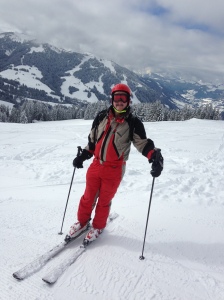 I will talk to anyone I can help. In many cases this continues throughout the treatment as we compare notes! I have made many new friends all over the world as we all help each other.
I will talk to anyone I can help. In many cases this continues throughout the treatment as we compare notes! I have made many new friends all over the world as we all help each other.
It is not an easy path to walk but easier if you walk it hand in hand with a loved one, in my case my wife Lesley who slept in my room most nights during my treatment.
It is scary, it is tough but it is worth it. Once on your way, be bold and positive. The prize is life!

And a Reflection on SCT: GVHD, Antigens, Stinkbugs and the workings of our immune system
Take me back to the Contents
© MPNforum.com, 2014. Unauthorized use and/or duplication of this material without express and written permission is prohibited. Excerpts and links may be used, provided that full and clear credit is given to MPNforum.com with appropriate and specific direction to the original content.
.
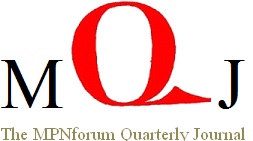

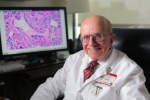
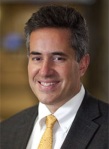




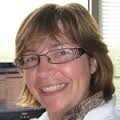
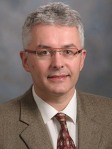
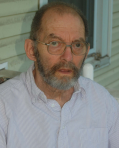

4 Comments
Post a commentThankyou … I was recently diagnosed with MF , similar to the story of Chris Harper above.
Very healthy in general , but an unusual blood count led to diagnosis .
I would love to talk to Chris Harper if possible ?
Thanks
Margaret
Very sorry for the delayed response, Margaret.Your comment simply got lost in the shuffle. I will forward it to Chris tonight.
All I can tell you is that stem cell transplantation works. Today is Day 322. I’ve got Myelofibrosis. I’m alive, doing well and thankful for the work done at the Dana Farber Cancer Institute in Boston and Dr. Vincent Ho; absolutely hands down the best there is!
A very thorough discussion. A question/concern I have always had is related to what are the most common causes of death after an sct. We have all known folks of a variety of ages who did not survive. I have never seen the discussions that would happen afterward regarding the cause of death. It seems that many of us are eager to share what is going well, harder to discuss what is not. Thank you for this thoughtful and informative discussion.